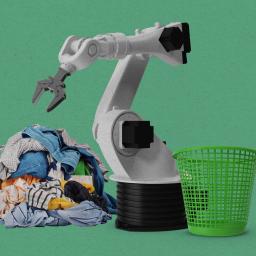 |
by Rhiannon Williams on (#6J9X1)
Robots are good at certain tasks. They're great at picking up and moving objects, for example, and they're even getting better at cooking. But while robots may easily complete tasks like these in a laboratory, getting them to work in an unfamiliar environment where there's little data available is a real challenge. Now, a new...
|
MIT Technology Review
| Link | https://www.technologyreview.com/ |
| Feed | https://www.technologyreview.com/stories.rss |
| Updated | 2025-12-18 03:17 |
 |
by Rhiannon Williams on (#6J924)
This is today's edition ofThe Download,our weekday newsletter that provides a daily dose of what's going on in the world of technology. Why the world's biggest EV maker is getting into shipping Earlier this month, a massive ship picked up over 5,000 electric cars from two ports in northern and southern China. Five days later,...
|
 |
by Zeyi Yang on (#6J8ZT)
This story first appeared in China Report, MIT Technology Review's newsletter about technology in China.Sign upto receive it in your inbox every Tuesday. For people who have been watching BYD for a long time, it won't be surprising that the company has just ventured into a new field. The Chinese electric-vehicle maker has been particularly...
|
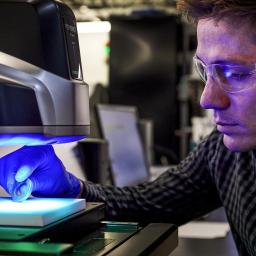 |
by Casey Crownhart on (#6J8ZV)
The motor in your vacuum cleaner and the one in your electric vehicle likely have at least one thing in common: they both rely on powerful permanent magnets to function. And the materials for those magnets could soon be in short supply. Permanent magnets can maintain a magnetic field on their own without an electric...
|
 |
by Zeyi Yang on (#6J89M)
Earlier this month, a massive ship picked up over 5,000 electric cars from two ports in northern and southern China. Five days later, it passed through Singapore, and it is now headed for India. However, its final destination is in Europe, where most of the cars will be sold. The ship's name is BYD Explorer...
|
 |
by Rhiannon Williams on (#6J86X)
This is today's edition ofThe Download,our weekday newsletter that provides a daily dose of what's going on in the world of technology. Three ways we can fight deepfake porn Last week, sexually explicit images of Taylor Swift, one of the world's biggest pop stars, went viral online. Millions of people viewed nonconsensual deepfake porn of...
|
 |
by Melissa Heikkilä on (#6J7M5)
This story originally appeared in The Algorithm, our weekly newsletter on AI. To get stories like this in your inbox first, sign up here. Hi, Taylor. I can only imagine how you must be feeling after sexually explicit deepfake videos of youwent viral on X. Disgusted. Distressed, perhaps. Humiliated, even. I'm really sorry this is...
|
 |
by Melissa Heikkilä on (#6J7HB)
Last week, sexually explicit images of Taylor Swift, one of the world's biggest pop stars, went viral online. Millions of people viewed nonconsensual deepfake porn of Swift on the social media platform X, formerly known as Twitter. X has since taken the drastic step of blocking all searches for Taylor Swift to try to get...
|
 |
by MIT Technology Review Insights on (#6J7E1)
For decades, procurement was seen as a back-office function focused on cost-cutting and supplier management. But that view is changing as supply chain disruptions and fluctuating consumer behavior ripple across the economy. Savvy leaders now understand procurement's potential to deliver unprecedented levels of efficiency, insights, and strategic capability across the business. However, tapping into procurement's...
|
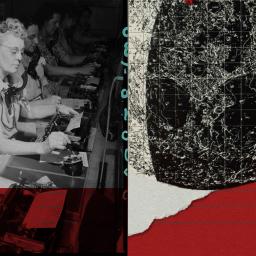 |
by Rhiannon Williams on (#6J77Y)
This is today's edition ofThe Download,our weekday newsletter that provides a daily dose of what's going on in the world of technology. People are worried that AI will take everyone's jobs. We've been here before. It was 1938, and the pain of the Great Depression was still very real. Unemployment in the US was around...
|
 |
by David Rotman on (#6J62S)
MIT Technology Review is celebrating our 125th anniversary with an online series that draws lessons for the future from our past coverage of technology. It was 1938, and the pain of the Great Depression was still very real. Unemployment in the US was around 20%. Everyone was worried about jobs. In 1930, the prominent British...
|
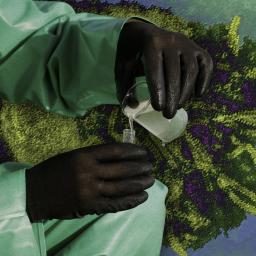 |
by Rhiannon Williams on (#6J5AW)
This is today's edition ofThe Download,our weekday newsletter that provides a daily dose of what's going on in the world of technology. How wastewater could offer an early warning system for measles Measles is back with a vengeance. In the UK, where only 85% of school-age children have received two doses of the MMR vaccine,...
|
 |
by Cassandra Willyard on (#6J56K)
Measles is back with a vengeance. In the UK, where only 85% of school-age children have received two doses of the MMR vaccine, as many as 300 people have contracted the disease since October. And in the US, an outbreak has infected nine people in Philadelphia since last month. One case has been reported in...
|
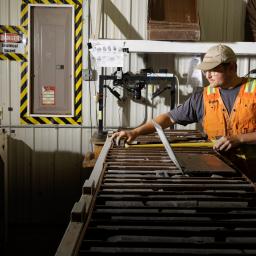 |
by Rhiannon Williams on (#6J4CG)
This is today's edition ofThe Download,our weekday newsletter that provides a daily dose of what's going on in the world of technology. How one mine could unlock billions in EV subsidies On a pine farm north of the tiny town of Tamarack, Minnesota, Talon Metals has uncovered one of America's densest nickel deposits-and now it...
|
 |
by Casey Crownhart on (#6J4A5)
This article is from The Spark, MIT Technology Review's weekly climate newsletter. To receive it in your inbox every Wednesday, sign up here. The world is building solar panels, wind turbines, electric vehicles, and other crucial climate technologies faster than ever. As the pace picks up, though, a challenge is looming: we need a whole...
|
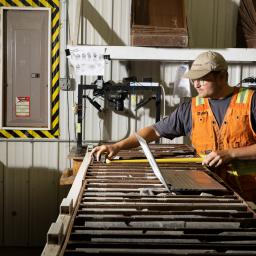 |
by James Temple on (#6J485)
A collection of brown pipes emerge at odd angles from the mud and overgrown grasses on a pine farm north of the tiny town of Tamarack, Minnesota. Beneath these capped drill holes, Talon Metals has uncovered one of America's densest nickel deposits-and now it wants to begin tunneling deep into the rock to extract hundreds...
|
 |
by Rhiannon Williams on (#6J3CR)
This is today's edition ofThe Download,our weekday newsletter that provides a daily dose of what's going on in the world of technology. How China is regulating robotaxis Not many technologies have had such a roller-coaster ride in the past year as robotaxis. In just a few months they went from San Francisco's new darling to...
|
 |
by Zeyi Yang on (#6J3AD)
This story first appeared in China Report, MIT Technology Review's newsletter about technology in China.Sign upto receive it in your inbox every Tuesday. Not many technologies have had such a roller-coaster ride in the past year as robotaxis. In just a few months they went from San Francisco's new darling to a national scandal after...
|
 |
by Rhiannon Williams on (#6J2GJ)
This is today's edition ofThe Download,our weekday newsletter that provides a daily dose of what's going on in the world of technology. This town's mining battle reveals the contentious path to a cleaner future In June last year, Talon, an exploratory mining company, submitted a proposal to Minnesota state regulators to begin digging up as...
|
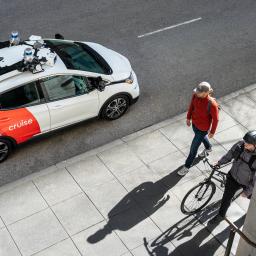 |
by Zeyi Yang on (#6J2EC)
MIT Technology Review's What's Next series looks across industries, trends, and technologies to give you a first look at the future. You can read the rest of our serieshere. In 2023, it almost felt as if the promise of robotaxis was soon to be fulfilled. Hailing a robotaxi had briefly become the new trendy thing...
|
 |
by James Temple on (#6J2CD)
Minnesota's Highway 210 threads through the tiny towns of Aitkin County, a poor and sparsely populated stretch of forests, lakes, and wetlands that reaches just into the northeastern corner of the state. A short drive off the highway, due south past the Tamarack Church, delivers you to Jackson's Hole, the last remaining business in the...
|
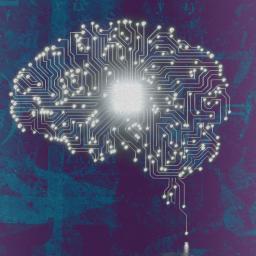 |
by Melissa Heikkilä on (#6J2CE)
This story originally appeared in The Algorithm, our weekly newsletter on AI. To get stories like this in your inbox first, sign up here. Last week the AI world was buzzing over a new paper inNature from Google DeepMind, in which the lab managed to create an AI system that can solve complex geometry problems....
|
by Rhiannon Williams on (#6J1KJ)
This is today's edition ofThe Download,our weekday newsletter that provides a daily dose of what's going on in the world of technology. Scientists are finding signals of long covid in blood. They could lead to new treatments. The news: For tens of millions of people, a case of covid is the beginning of a chronic...
 |
by Tate Ryan-Mosley on (#6J1GY)
This article is from The Technocrat, MIT Technology Reviews weekly tech policy newsletter about power, politics, and Silicon Valley. To receive it in your inbox every Friday, sign up here. The Iowa caucuses on January 15 officially kicked off the 2024 presidential election.I've said it before and I'll say it again-the biggest story of this...
|
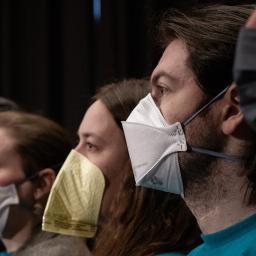 |
by Cassandra Willyard on (#6HZW6)
For many people, covid is an illness that blusters in and out of our lives as cases spike and recede. But for tens of millions of others, a case of covid is the beginning of a chronic and sometimes debilitating illness that persists for months or even years. What makes individuals with long covid different...
|
 |
by Rhiannon Williams on (#6HZKS)
This is today's edition ofThe Download,our weekday newsletter that provides a daily dose of what's going on in the world of technology. A brain-dead man was attached to a gene-edited pig liver for three days Surgeon Abraham Shaked thinks he has probably carried out more than 2,500 liver transplants. But in December 2023, the team...
|
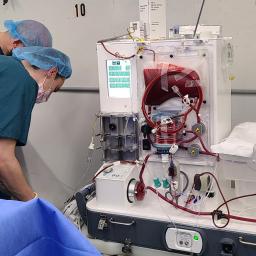 |
by Antonio Regalado on (#6HZHR)
This article first appeared in The Checkup, MIT Technology Review's weekly biotech newsletter. To receive it in your inbox every Thursday, and read articles like this first,sign up here. Hooked up to a ventilation machine, a person can be dead in the eyes of the law, medical professionals, and loved ones, yet still alive enough...
|
 |
by Abdullahi Tsanni on (#6HZG2)
Raesetje Sefala grew up sharing a bedroom with her six siblings in a cramped township in the Limpopo province of South Africa. The township's inhabitants, predominantly Black people, had inadequate access to schools, health care, parks, and hospitals. But just a few miles away in Limpopo, white families lived in big, attractive houses, with easy...
|
 |
by Antonio Regalado on (#6HYXC)
Surgeon Abraham Shaked thinks he has probably carried out more than 2,500 liver transplants. But in December 2023, a team he oversees at the University of Pennsylvania did something he'd never tried before. Working on the body of a brain-dead man, they attached his veins to a refrigerator-size machine with pig liver mounted in the...
|
 |
by Rhiannon Williams on (#6HYPT)
This is today's edition ofThe Download,our weekday newsletter that provides a daily dose of what's going on in the world of technology. Exascale computers: 10 Breakthrough Technologies 2024 In May 2022, the global supercomputer rankings were shaken up by the launch of Frontier. It's the fastest supercomputer in the world, and can perform as many...
|
 |
by Casey Crownhart on (#6HYMD)
This article is from The Spark, MIT Technology Review's weekly climate newsletter. To receive it in your inbox every Wednesday, sign up here. I've got nuclear power on the brain this week. The workings of nuclear power plants have always fascinated me. They're massive, technically complicated, and feel a little bit magic (splitting the atom-what...
|
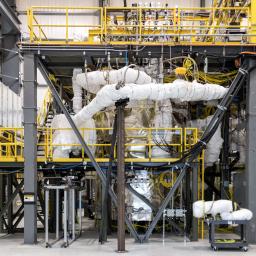 |
by Casey Crownhart on (#6HXWF)
For more than a month in total, 12 metric tons of molten salt coursed through pipes at Kairos Power in Albuquerque, New Mexico. The company is developing a new type of nuclear reactor that will be cooled using this salt mixture, and its first large-scale test cooling system just completed 1,000 hours of operation in...
|
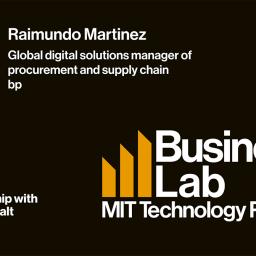 |
by MIT Technology Review Insights on (#6HXWG)
In business, the acceleration of change means enterprises have to live in the future, not the present. Having the tools and technologies to enable forward-thinking and underpin digital transformation is key to survival. Supply chain procurement leaders are tasked with improving operational efficiencies and keeping an eye on the bottom line. For Raimundo Martinez, global...
|
 |
by Rhiannon Williams on (#6HXWH)
A new AI system could help detect the most common form of pancreatic cancer, new research has found. Pancreatic cancer is a difficult disease to detect. The pancreas itself is hidden by other organs in the abdomen, making it tough to spot tumors during tests. Patients also rarely experience symptoms in the early stages, meaning...
|
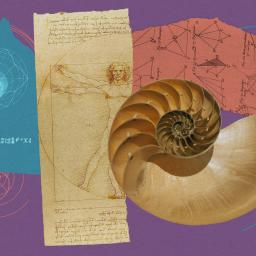 |
by June Kim on (#6HXWJ)
Google DeepMind has created an AI system that can solve complex geometry problems. It's a significant step towards machines with more human-like reasoning skills, experts say. Geometry, and mathematics more broadly, have challenged AI researchers for some time. Compared with text-based AI models, there is significantly less training data for mathematics because it is symbol...
|
 |
by Rhiannon Williams on (#6HXQ3)
This is today's edition ofThe Download,our weekday newsletter that provides a daily dose of what's going on in the world of technology. Twitter killers: 10 Breakthrough Technologies 2024 For the better part of 17 years, the roiling, rolling, fractious, sometimes funny, sometimes horrifying, never-ever-ending global conversation had a central home: Twitter. If you wanted to...
|
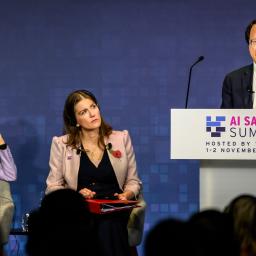 |
by Zeyi Yang on (#6HXMW)
This story first appeared in China Report, MIT Technology Review's newsletter about technology in China.Sign upto receive it in your inbox every Tuesday. Last year was a banner year for artificial intelligence. Thanks to products like ChatGPT, many millions of people are now directly interacting with AI, talking about it, and grappling with its impact...
|
 |
by Rhiannon Williams on (#6HWRP)
This is today's edition ofThe Download,our weekday newsletter that provides a daily dose of what's going on in the world of technology. Apple Vision Pro: 10 Breakthrough Technologies 2024 History is littered with doomed face computers. Google Glass, Microsoft HoloLens, and even Meta's Quest line all flopped. Now, it's Apple's turn to try. At the...
|
 |
by Jessica Taylor Price on (#6HWPM)
There was one individual Olympic spot left. According to the intricate set of rules governing who gets slots for the games, it would come down to who placed highest in the high bar final: Croatia's Tin Srbi or Brazil's Arthur Nory Mariano. They were at the 2023 World Championships in Antwerp, Belgium, last October. Mariano...
|
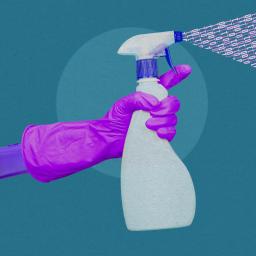 |
by Melissa Heikkilä on (#6HWMT)
This story originally appeared in The Algorithm, our weekly newsletter on AI. To get stories like this in your inbox first, sign up here. Welcome back to The Algorithm! I have a chair of shame at home. By that I mean a chair in my bedroom onto which I pile used clothes that aren't quite...
|
 |
by MIT Technology Review Insights on (#6HW6A)
In 2006, British mathematician Clive Humby said, data is the new oil." While the phrase is almost a cliche, the advent ofgenerative AIis breathing new life into this idea. A global study on theFuture of Enterprise Data & AI by WNS Triange and Corinium Intelligence shows 76% of C-suite leaders and decision-makers are planning or...
|
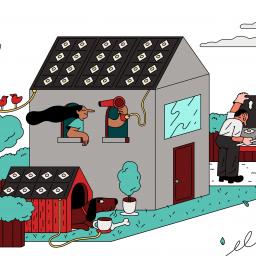 |
by Rhiannon Williams on (#6HVZ7)
This is today's edition ofThe Download,our weekday newsletter that provides a daily dose of what's going on in the world of technology. Super-efficient solar cells: 10 Breakthrough Technologies 2024 In November 2023, a buzzy solar technology broke yet another world record for efficiency. The previous record had existed for only about five months-and it likely...
|
 |
by Tate Ryan-Mosley on (#6HVZ8)
This article is from The Technocrat, MIT Technology Reviews weekly tech policy newsletter about power, politics, and Silicon Valley. To receive it in your inbox every Friday, sign up here. We're only a few weeks into 2024, and violations of people's privacy are already making some big headlines! First we had the continued drama with...
|
 |
by Melissa Heikkilä on (#6HVX4)
Sophisticated robots don't have to cost a fortune. Even relatively cheap robots can do complex manipulation tasks and learn new skills quickly using AI, a new study has shown. With just $32,000, researchers from Stanford University managed to build a wheeled robot that can cook a three-course Cantonese meal with human supervision. Then they used...
|
 |
by Emma Foehringer Merchant on (#6HVX5)
In Swift Solar's lab, more than a dozen pairs of elbow-length rubber gloves hover horizontally in midair, inflated like arms. The gloves are animated by gaseous nitrogen and jut out of waist-high, glass-walled enclosures, designed to keep the workspaces dry and airtight to protect the delicate solar materials inside. In a corner, technician Roger Thompson...
|
 |
by Rhiannon Williams on (#6HT0M)
This is today's edition ofThe Download,our weekday newsletter that provides a daily dose of what's going on in the world of technology. Heat pumps: 10 Breakthrough Technologies 2024 We've entered the era of the heat pump. Heat pumps are appliances that can cool and heat spaces using electricity. Many buildings today are still heated with...
|
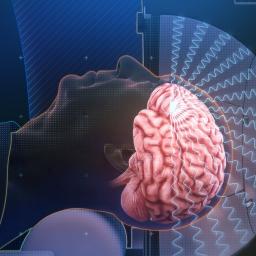 |
by Cassandra Willyard on (#6HSWT)
This article first appeared in The Checkup, MIT Technology Review's weekly biotech newsletter. To receive it in your inbox every Thursday, and read articles like this first,sign up here. Therapies to treat brain diseases share a common problem: they struggle to reach their target. The blood vessels that permeate the brain have a special lining...
|
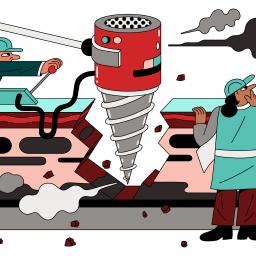 |
by Rhiannon Williams on (#6HS10)
This is today's edition ofThe Download,our weekday newsletter that provides a daily dose of what's going on in the world of technology. Enhanced geothermal systems: 10 Breakthrough Technologies 2024 Geothermal heat, an abundant and carbon-free energy source, offers an alternative to fossil fuels that doesn't vary with the weather or time of day. However, conventional...
|
 |
by Casey Crownhart on (#6HRYK)
This article is from The Spark, MIT Technology Review's weekly climate newsletter. To receive it in your inbox every Wednesday, sign up here. Awards season is upon us, and I can't get enough. Red-carpet fashion, host drama, heartwarming speeches-I love it all. I caught the Golden Globes last weekend, and the Grammys and Oscars aren't...
|
 |
by MIT Technology Review Insights on (#6HR74)
Although AI is by no means a new technology there have been massive and rapid investments in it and large language models. However, the high-performance computing that powers these rapidly growing AI tools - and enables record automation and operational efficiency - also consumes a staggering amount of energy. With the proliferation of AI comes...
|